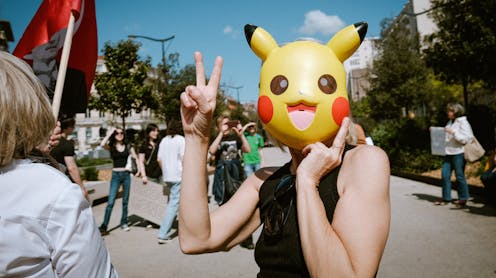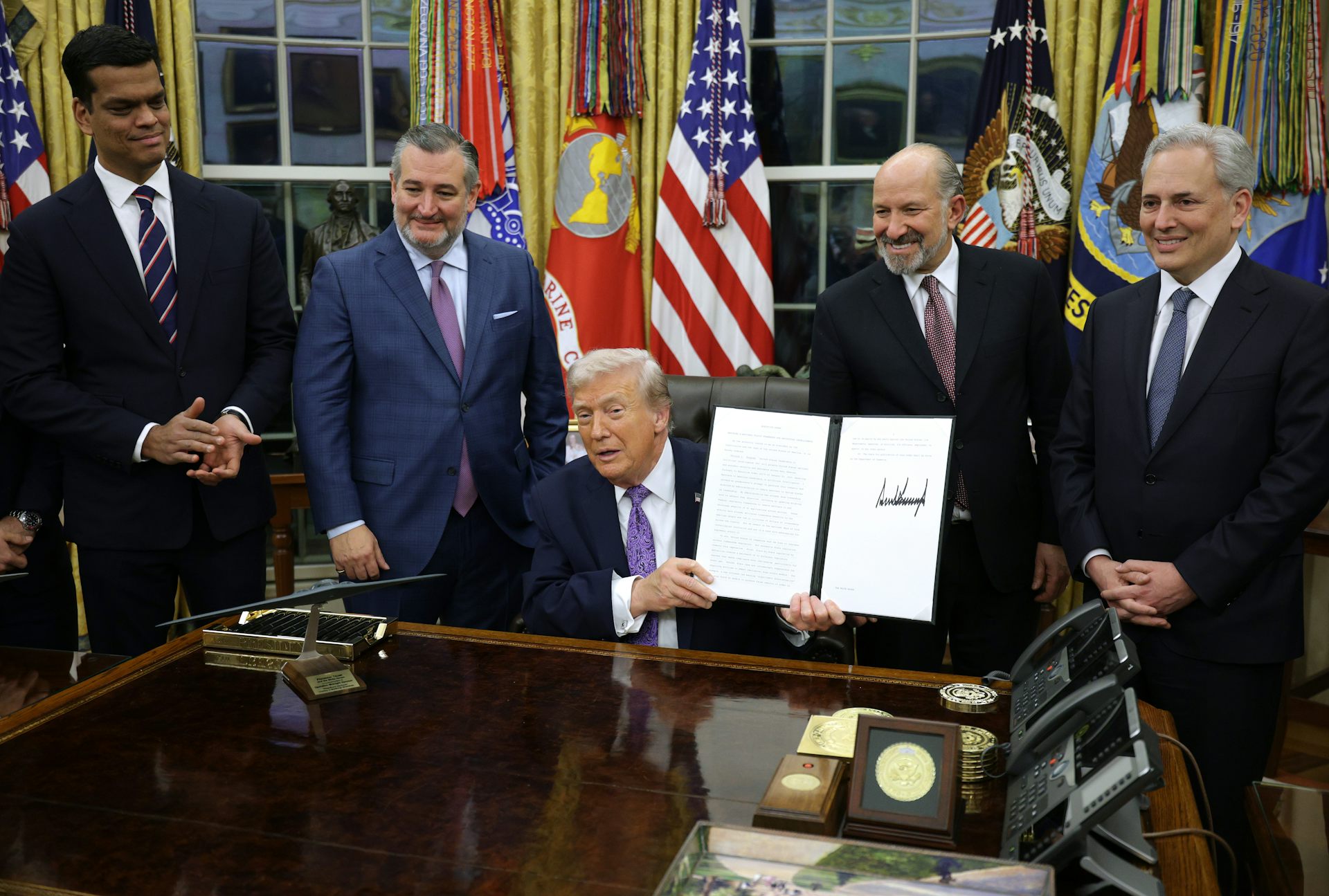Pikachu protesters, Studio Ghibli memes and the subversive power of cuteness
Cute characters are often vulnerable, innocent and lovable – and therein lies their power.

In Antalya, Turkey, in the early hours of March 27, 2025, Pikachu was spotted fleeing the police, making a getaway as fast as his short yellow legs could waddle.
The person dressed as the popular Pokémon character had been objecting to the arrest of Istanbul Mayor Ekrem Imamoglu, whose political party later posted on X, “Pepper spray, which even affects Pikachu, won’t do anything to you or me! #ResistPikachu.”
At the same time, the internet was having a field day with another stalwart of Japanese anime, deploying generative AI to infuse famous memes, family portraits and movie scenes with a patina of cuteness by recasting them in the style of the Japanese animation company Studio Ghibli.
Never mind that Studio Ghibli director and founder Hayao Miyazaki famously denounced AI-generated art as “an insult to life itself.” Both the Pikachu protester and the viral Studio Ghibli-esque animations demonstrate the global appeal of cuteness.
But to me, there’s more to cute than its ability to go viral.
Cuteness can be used politically. It can highlight injustices against the vulnerable, and it can boost support of the underdog.
It’s a form of soft power in the truest sense of the term.
Asia embraces the cute
As a Taiwanese American, I’ve been a lifelong fan of the cuteness that’s part of East Asian cultures: cute cartoon characters, cute stationery and even cute-looking food.
Now I study cuteness: what makes something “cute,” and how it operates in culture and politics.
Many well-known, cute, pop culture characters and products can be traced to Japan, particularly after World War II, when Japanese animation – known as anime – and a style of Japanese comics called manga became popular.
Their narratives and aesthetics spoke to a country still reeling from devastation wrought by the atomic bombs and the humiliation of U.S. occupation.
Anime and manga imagined both dystopian and utopian futures, using stories that were nostalgic, upsetting, or a blend of both to process collective trauma.
In many cases, cute characters guided viewers and readers through grief, guilt and loss. For example, the manga “Barefoot Gen” details the adventures of 6-year-old Gen after he survives the bombing of Hiroshima. Likewise, Studio Ghibli’s “Grave of the Fireflies” tells the story of two young siblings, Seita and Setsuko, who face starvation after the bombing of Kobe in the waning days of World War II. They’re drawn with large eyes and expressive faces, evoking innocence and powerlessness.
Both Studio Ghibli and the Pokémon franchise emerged in the latter half of the 20th century, along with other titans of cuteness, such as Hello Kitty – she just celebrated her 50th birthday – Doraemon, and popular Nintendo characters Kirby and Yoshi.
Cuteness now dominates East Asian cultures.
Cute mascots such as Tencent’s QQ Penguin hawk products in China; popular cartoon characters plaster the sides of Japanese trains; and Taipei’s subway cards come in the shape of pink bunnies and miniature rice cookers.
In Japan, the term “kawaii” refers to the lovable and cute. This includes not only cartoon characters and plush dolls, but also clothing and even speech, such as talking with a pout or in a childlike voice.
Across Asia, you can see cuteness celebrated in the way people flash heart symbols with their fingers – a gesture originating in South Korea – and you can hear it in the way celebrities sometimes speak with a baby voice, puff out their cheeks or bat their eyelashes.
Softening the blows
Cuteness has a place in American culture. But it has nowhere near the cultural cachet that it has in Asia.
Yet to me, the Studio Ghibli memes that swept American social media platforms revealed a widespread longing for tenderness at a time when the world seems particularly harsh, violent and unpredictable.
Theorist Sianne Ngai has argued that cuteness is usually based on the power differential between the observer and the cute object: A small kitten, a stuffed animal or a cooing baby are cute, in part, because they’re so vulnerable.
I think that’s why the White House’s efforts to join in on the Ghibli memes fell flat. Its X account posted a Ghibli-esque image of a Dominican woman crying while being handcuffed by an ICE agent. The depiction generated outrage.
The cartoon imagines that the audience would revel in punching down. It’s a perversion of how cuteness works, celebrating the powerful – the ICE agent and the U.S. government – and not the powerless. Contrast the White House’s image with the “Grave of the Fireflies,” which highlighted the vulnerability of children during war.
Rallying around cuteness
Yet the powerlessness of cute characters can also, paradoxically, be powerful: Most onlookers can’t help but cheer for a furry, yellow cartoon animal fleeing from riot police. A cute character can look helpless, but it can rally support for the underdog.
Perhaps that’s why Pikachu again popped up at two other protests: at an anti-Netanyahu demonstration in Israel on April 5, 2025, and at an anti-Trump rally in Washington, D.C. that same day.
Cuteness, perhaps not surprisingly, has been used as a political tool in Asia. The Milk Tea Alliance, which formed in 2020, is a pan-Asian, pro-democracy movement that unites communities in Hong Kong, Taiwan, Thailand, Myanmar and beyond.
Organizers pointedly emphasize the effectiveness of cuteness and humor as a tool to condemn violence and denounce authoritarianism. Online images shared by the movement include anime-style drawings of young student protestors and cartoons of anthropomorphized cups of Taiwan bubble tea, Thai cha and Hong Kong milk tea holding hands.
Comedy can be subversive. Political cartoons and comedians, of course, have long tapped into this dynamic.
But cuteness adds a touch of whimsical absurdity that further defangs the power hungry. Is it any wonder Chinese officials banned the release of a Winnie-the-Pooh movie after memes comparing Xi Jinping to the beloved stuffed bear went viral?
Despite its cuddly, quaint and charming exterior, cuteness contains hidden superpowers: It celebrates the vulnerable, while sapping authoritarians of gravitas they seek to project.
Yii-Jan Lin does not work for, consult, own shares in or receive funding from any company or organization that would benefit from this article, and has disclosed no relevant affiliations beyond their academic appointment.
Read These Next
What’s at stake in Trump’s executive order aiming to curb state-level AI regulation
In the absence of comprehensive federal AI regulation, states have stepped in. The Trump administration,…
The Bible says little about Jesus’ childhood – but that didn’t stop medieval Christians from enjoyin
Legends about Jesus’ early years that circulated in medieval Europe often drew on apocryphal texts.
Data centers need electricity fast, but utilities need years to build power plants – who should pay?
How many data centers will be built – and how much electricity they’ll need – is uncertain. Being…





